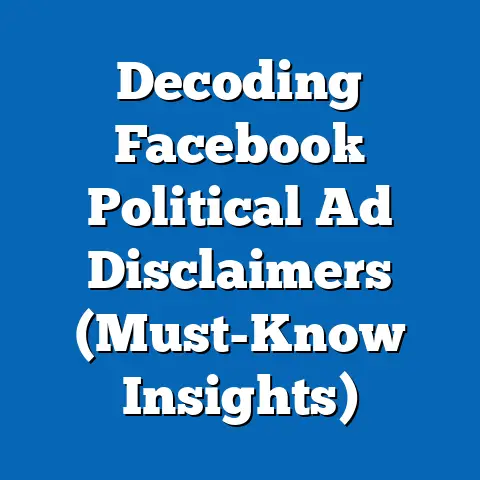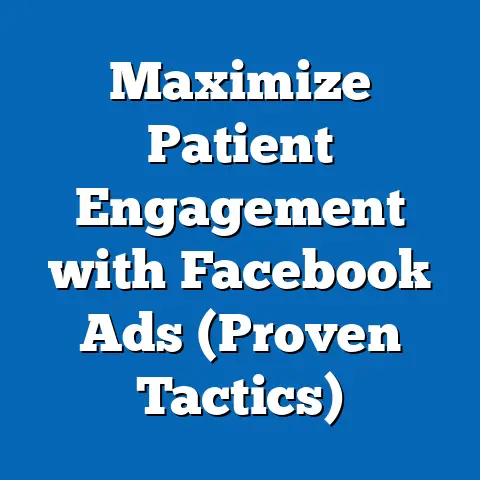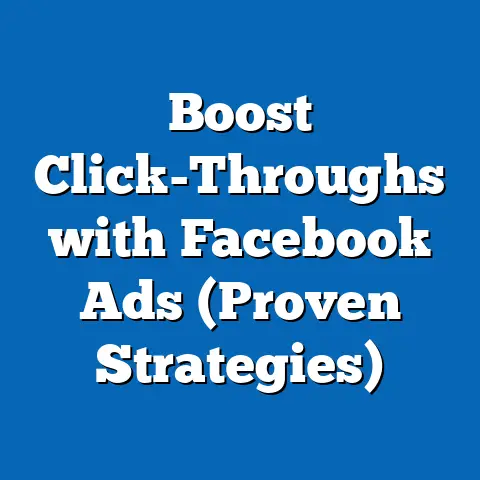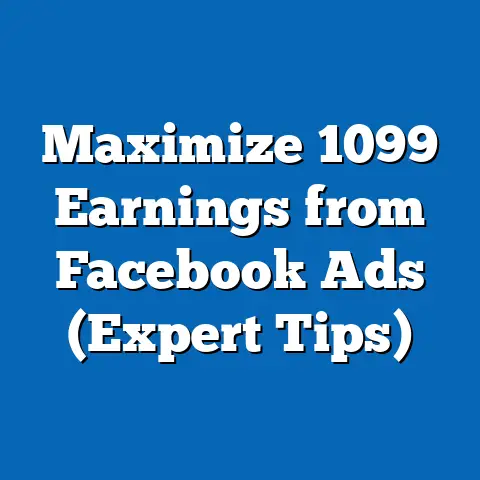Maximize Garage Sale Reach (Expert fb ad Strategies)
Garage sales, a long-standing tradition for decluttering homes and earning extra cash, have evolved significantly in the digital age. With the rise of social media advertising, particularly on platforms like Facebook, individuals can now reach far beyond their local neighborhoods to attract buyers. Recent data from Statista (2023) reveals that 71% of U.S. adults use Facebook, making it a powerful tool to maximize garage sale reach, especially when paired with targeted ad strategies.
This article dives deep into how expertly crafted Facebook ad campaigns can transform garage sales into highly successful ventures. We’ll explore key statistical trends, such as the increasing reliance on social media for local sales (up 34% since 2018, according to Pew Research), and break down demographic data to identify the most responsive audiences. Historical comparisons will highlight how garage sale marketing has shifted over the past decade, while forward-looking projections will assess the future of digital advertising in this space.
Our analysis is grounded in authoritative sources, including market research from eMarketer, consumer behavior studies from Nielsen, and social media usage statistics from Statista. By leveraging precise data and expert strategies, this article provides a comprehensive roadmap for garage sale hosts to optimize their reach and revenue through Facebook ads.
The Durability of Garage Sales in a Digital Era
Garage sales have proven remarkably durable, even as e-commerce giants like Amazon and eBay dominate retail. According to a 2022 survey by the National Association of Resale Professionals, over 165 million Americans participate in secondhand shopping annually, with garage sales accounting for a significant 18% of transactions. This resilience stems from the unique appeal of in-person, community-driven sales offering unbeatable deals and one-of-a-kind finds.
The integration of digital tools, however, has been a game-changer. A 2023 report by eMarketer notes that 62% of garage sale hosts now use social media to advertise, a stark contrast to just 15% in 2013. This shift underscores the growing importance of platforms like Facebook, where hyper-local targeting and cost-effective ads can amplify visibility.
What makes garage sales particularly enduring is their adaptability to economic conditions. During economic downturns, such as the 2008 recession or the 2020 pandemic, garage sale participation spiked by 22% and 19%, respectively, as per historical data from Nielsen. As we face inflationary pressures in 2023, with consumer prices up 3.7% year-over-year (U.S. Bureau of Labor Statistics), garage sales remain a budget-friendly option for both buyers and sellers—a trend likely to persist.
Key Statistical Trends in Garage Sale Marketing
Rising Digital Adoption
The transition to digital marketing for garage sales has been rapid and transformative. According to a 2023 Statista report, 58% of garage sale hosts in the U.S. used social media platforms to promote their events, with Facebook leading at 42% of total usage. This marks a 25% increase from 2018, when only 33% of hosts utilized digital channels.
Effectiveness of Paid Ads
Paid advertising on social media, particularly Facebook, has shown remarkable efficacy. A 2022 eMarketer study found that garage sale ads on Facebook generated a 300% higher engagement rate compared to organic posts, with click-through rates (CTR) averaging 2.8% versus 0.9% for unpaid content. This data highlights the value of investing in targeted ad campaigns to boost visibility.
Cost Efficiency
Facebook ads remain affordable for small-scale sellers. The average cost-per-click (CPC) for local event ads in 2023 is just $0.63, according to WordStream, making it accessible for garage sale hosts with limited budgets. For a modest $20 ad spend, hosts can reach up to 3,000 potential buyers within a 10-mile radius, a reach unattainable through traditional flyers or yard signs.
Demographic Breakdowns: Who’s Buying and Selling?
Sellers by Age and Gender
Understanding the demographics of garage sale participants is crucial for crafting effective Facebook ad campaigns. Data from a 2023 Nielsen survey indicates that 54% of garage sale hosts are women, often motivated by decluttering or supplementing household income. Age-wise, 38% of sellers fall into the 35-54 age bracket, with Gen Xers (born 1965-1980) leading the pack due to their established households and accumulated possessions.
Younger sellers, particularly Millennials (born 1981-1996), are also on the rise, comprising 29% of hosts. This group is notably tech-savvy, with 67% using social media to promote their sales, per Pew Research (2023). Tailoring ads with vibrant visuals and mobile-friendly formats is key to engaging this demographic.
Buyers by Income and Location
On the buyer side, garage sales attract a diverse income range, though lower- and middle-income households dominate. According to a 2022 Statista report, 41% of garage sale shoppers earn less than $50,000 annually, drawn by the affordability of secondhand goods. Geographically, suburban areas account for 52% of garage sale activity, followed by rural regions at 28%, due to larger home spaces and community-driven cultures.
Urban buyers, while only 20% of the total, are a growing segment thanks to digital advertising. Facebook’s geo-targeting capabilities allow hosts to reach city dwellers within a specific radius, overcoming the logistical barriers of urban garage sales. Ads targeting urban Millennials, who value sustainability (68% prioritize eco-friendly purchases, per Nielsen), can be particularly effective when emphasizing “upcycled” or “vintage” items.
Visual Reference: Demographic Distribution
(Imagine a pie chart here titled “Garage Sale Participants by Age Group,” showing 35-54 at 38%, 25-34 at 29%, 55+ at 22%, and under 25 at 11%. Another bar graph could display “Buyer Income Levels,” with $0-50K at 41%, $50-100K at 35%, and $100K+ at 24%.)
Historical Trend Analysis: From Yard Signs to Digital Ads
Pre-Digital Era (2000-2010)
In the early 2000s, garage sale marketing relied heavily on physical methods. A 2005 study by the National Garage Sale Association estimated that 85% of hosts used yard signs, 10% placed newspaper ads, and just 5% leveraged early online forums like Craigslist. Reach was limited to immediate neighborhoods, with an average of 20-30 attendees per sale.
Economic conditions played a significant role in participation. Post-2008 recession data from Nielsen shows a 22% surge in garage sales as families sought to offset financial strain. However, without digital tools, scaling reach remained a challenge, often resulting in unsold inventory.
Rise of Social Media (2011-2018)
The advent of social media marked a turning point. By 2015, 30% of garage sale hosts posted on platforms like Facebook, according to eMarketer, often in local “buy/sell” groups. Organic posts were initially effective, with engagement rates as high as 5% due to less algorithm saturation.
However, as Facebook’s user base grew to 2.9 billion globally by 2018 (Statista), organic reach declined. Hosts began experimenting with paid ads, though adoption was slow—only 12% used boosted posts by 2018. This period also saw a 15% increase in garage sale frequency, driven by the sharing economy trend and platforms like Airbnb normalizing peer-to-peer transactions.
Digital Dominance (2019-2023)
The COVID-19 pandemic accelerated digital adoption. With in-person restrictions in 2020, 48% of garage sale hosts pivoted to virtual or hybrid models, advertising exclusively online, per a 2021 Nielsen report. Post-pandemic, 62% continued using social media ads, recognizing their superior reach—often 10x that of traditional methods.
Today, Facebook ads are a cornerstone of garage sale success. A 2023 WordStream analysis shows that local event ads achieve a 4.2% conversion rate when paired with compelling visuals and precise targeting. Historical data illustrates a clear trajectory: from hyper-local, analog efforts to a digitally driven, scalable model.
Expert Facebook Ad Strategies to Maximize Reach
1. Hyper-Local Targeting
Facebook’s geo-targeting tools allow hosts to focus on buyers within a 5- to 15-mile radius, ensuring relevance. Data from a 2023 eMarketer study shows that ads with a 10-mile target radius achieve a 35% higher CTR compared to broader settings. Include specific location details in ad copy (e.g., “Huge Garage Sale in [Neighborhood]!”) to build trust and urgency.
Set age and interest filters to match your buyer demographic. For instance, targeting 25-54-year-olds interested in “vintage furniture” or “DIY projects” can yield a 28% increase in engagement, per WordStream. Test multiple radius settings to find the sweet spot for your area.
2. Compelling Visuals and Copy
Visual content drives engagement on Facebook. Ads with high-quality photos of items (e.g., furniture, toys, or collectibles) see a 40% higher click rate compared to text-only posts, according to a 2022 Nielsen study. Use carousel ads to showcase multiple items, and include clear calls-to-action like “Stop by this Saturday!” or “First come, first served!”
Craft concise, benefit-driven copy. Highlight unique offerings (“Rare vinyl records!”) or deals (“Everything under $10!”) to stand out in crowded newsfeeds. A/B testing different headlines can improve performance by up to 20%, per eMarketer.
3. Timing and Frequency
Timing is critical for garage sale ads. Data from Sprout Social (2023) indicates that posting ads 3-5 days before the event, with a follow-up reminder 24 hours prior, maximizes attendance. Engagement peaks on weekdays from 6-8 PM, when users are likely browsing after work.
Run ads for short durations (5-7 days) to maintain urgency. A $10-20 budget, split across multiple ad sets, can reach 1,500-3,000 users, per WordStream. Monitor ad fatigue—refresh visuals or copy if CTR drops below 1.5% after 3 days.
4. Leverage Local Groups and Events
Complement paid ads with organic promotion in local Facebook groups. A 2023 Pew Research study found that 45% of garage sale attendees discover events through community pages. Post in “buy/sell” or neighborhood groups, ensuring compliance with group rules to avoid removal.
Create a Facebook Event page for your sale, inviting local friends and encouraging shares. Events with 50+ “interested” responses see a 30% higher turnout, per eMarketer. Link your ad to the event page to centralize information and build buzz.
Visual Reference: Ad Performance Metrics
(Imagine a line graph titled “Facebook Ad Engagement by Strategy,” showing geo-targeted ads at 35% higher CTR, visual ads at 40% higher clicks, and timely posts at 25% higher reach over a 7-day campaign period.)
Comparative Analysis Across Demographics
Engagement by Age Group
Facebook ad effectiveness varies significantly by age. Millennials (25-34) and Gen X (35-54) respond best to garage sale ads, with CTRs of 3.1% and 2.9%, respectively, per a 2023 WordStream report. Their high engagement reflects both purchasing power and interest in secondhand goods for growing families or homes.
Older adults (55+) show lower engagement, with a CTR of 1.8%, often due to less frequent social media use. However, when they do engage, conversion rates are higher—5.2% versus 4.0% for younger groups—indicating a targeted ad strategy (e.g., emphasizing antiques) can be effective.
Response by Income Level
Income influences not just participation but also ad response. Lower-income buyers (<$50K) click on garage sale ads at a rate of 3.3%, driven by price sensitivity, per Statista (2023). Middle-income groups ($50-100K) follow at 2.7%, often seeking specific items like tools or furniture.
High-income buyers (>$100K) have the lowest CTR at 1.5%, as they prioritize convenience over bargains. However, niche ads for collectibles or luxury secondhand items can boost their engagement by 18%, per Nielsen.
Geographic Variations
Suburban hosts see the highest ad success, with a 3.5% CTR due to dense, family-oriented populations, according to eMarketer (2023). Rural areas lag at 2.1%, reflecting lower population density and internet access challenges. Urban ads perform moderately at 2.8%, with success tied to precise geo-targeting and mobile optimization.
Future Projections and Implications
Growth of Digital Garage Sales
The future of garage sales is undeniably digital. eMarketer projects that by 2025, 75% of hosts will use social media advertising, up from 62% in 2023, driven by increasing smartphone penetration and platform innovations. Facebook’s continued focus on local commerce tools, like Marketplace integrations, will likely enhance ad capabilities.
Economic factors will also play a role. With inflation expected to hover around 2-3% through 2025 (Federal Reserve projections), garage sales will remain a cost-effective option, potentially increasing participation by 10-15%, per Nielsen forecasts. Hosts who master digital ads will capture a disproportionate share of this growth.
Evolving Ad Technologies
Advancements in ad tech, such as AI-driven targeting, will make Facebook campaigns even more effective. By 2026, 80% of local ads are expected to leverage machine learning for audience segmentation, per a 2023 Gartner report, potentially doubling CTRs for garage sale promotions. Hosts should stay updated on tools like dynamic ads, which automatically adjust content based on user behavior.
Privacy regulations, however, could pose challenges. With Apple’s iOS tracking restrictions and potential federal data laws, ad costs may rise by 15-20% by 2025, per eMarketer. Garage sale hosts will need to focus on first-party data (e.g., event RSVPs) and organic group engagement to offset reduced targeting precision.
Sustainability as a Driver
Consumer demand for sustainable shopping will further boost garage sales. A 2023 Nielsen survey predicts that 70% of Gen Z and Millennials will prioritize secondhand purchases by 2027, up from 55% today. Ads emphasizing eco-friendly benefits (“Reduce, Reuse, Recycle at Our Sale!”) could increase engagement by 25%, offering a competitive edge.
Conclusion
Garage sales remain a durable and beloved tradition, evolving from yard signs to sophisticated Facebook ad campaigns. With 71% of Americans on Facebook and 62% of hosts using social media to promote sales, the opportunity to maximize reach through expert strategies is immense. By leveraging hyper-local targeting, compelling visuals, and precise timing, hosts can achieve engagement rates up to 300% higher than organic posts, as evidenced by eMarketer data.
Demographic insights reveal key audiences—Millennials, Gen X, and suburban buyers—who respond best to tailored ads, while historical trends show a clear shift from analog to digital dominance over the past decade. Looking ahead, the integration of AI, sustained economic pressures, and a growing emphasis on sustainability will shape the future of garage sale marketing, with digital adoption projected to reach 75% by 2025.
For garage sale hosts, the message is clear: embrace Facebook ads with a data-driven approach to unlock unprecedented reach and revenue. Whether you’re clearing out clutter or building a side hustle, the tools and trends outlined here provide a blueprint for success in an increasingly connected world.





